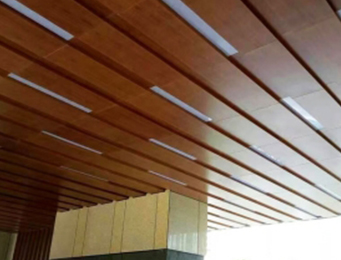
As a material widely used in building decoration, the price of aluminum veneer is affected by many factors. The prices of aluminum veneers of different brands and specifications will be different. The following is an analysis of the key factors affecting the price of aluminum veneer:
Material quality
Material quality is one of the main factors affecting the price of aluminum veneer:
Aluminum alloy composition: Different grades of aluminum alloy materials have differences in strength, corrosion resistance, etc. The price of aluminum veneer using high-quality aluminum alloy materials is relatively high.
Thickness: The thickness of aluminum veneer directly affects its price. The thicker the thickness, the more materials used, and the higher the price.
Coating material: The surface of aluminum veneer is usually coated. Different types of coating materials (such as fluorocarbon coating, powder coating, etc.) have different prices, and high-performance coating materials have higher costs.
Production process
The complexity of the production process will also affect the price of aluminum veneer:
Processing technology: The processing technology of aluminum veneer includes cutting, bending, welding, etc. The more complex the process, the higher the production cost and the higher the price.
Surface treatment process: The surface treatment processes of aluminum veneers, such as spraying, brushing, anodizing, etc., have different costs for different processes, and complex surface treatment processes will increase production costs.
Customization requirements: Some projects require customized aluminum veneers of special sizes, shapes or patterns. These customization requirements will increase production difficulty and cost, leading to price increases.
Brand and market positioning
Brand and market positioning are also important factors affecting the price of aluminum veneers:
Brand influence: Well-known brands usually have advantages in product quality, after-sales service, etc., and the prices are relatively high. Consumers are willing to pay for brand premiums to obtain more reliable products and services.
Market positioning: Different brands have different positioning in the market. Some brands focus on the high-end market and have higher product prices; while some brands are positioned in the mid-to-low-end market and have relatively low prices.
Market supply and demand
The market supply and demand relationship will also affect the price of aluminum veneers:
Supply situation: When there is sufficient supply of aluminum veneers in the market, the price is relatively stable; when the supply is insufficient, the price may rise.
Changes in demand: Changes in demand in the construction industry will also affect the price of aluminum veneers. For example, when construction projects are concentrated, the demand for aluminum veneers increases and prices may rise.
Logistics and installation costs
Logistics and installation costs are additional factors that affect the price of aluminum veneers:
Transportation distance: The transportation cost of aluminum veneers is proportional to the transportation distance. The longer the transportation distance, the higher the cost, and the final product price will also increase.
Installation difficulty: The installation difficulty of different projects is different. Complex installation environments require more manpower and time costs, which will also be reflected in the final price of aluminum veneers.
In summary, the price of aluminum veneers is affected by many factors such as material quality, production process, brand and market positioning, market supply and demand, logistics and installation costs. Understanding these key factors will help consumers make more informed decisions when purchasing aluminum veneers.